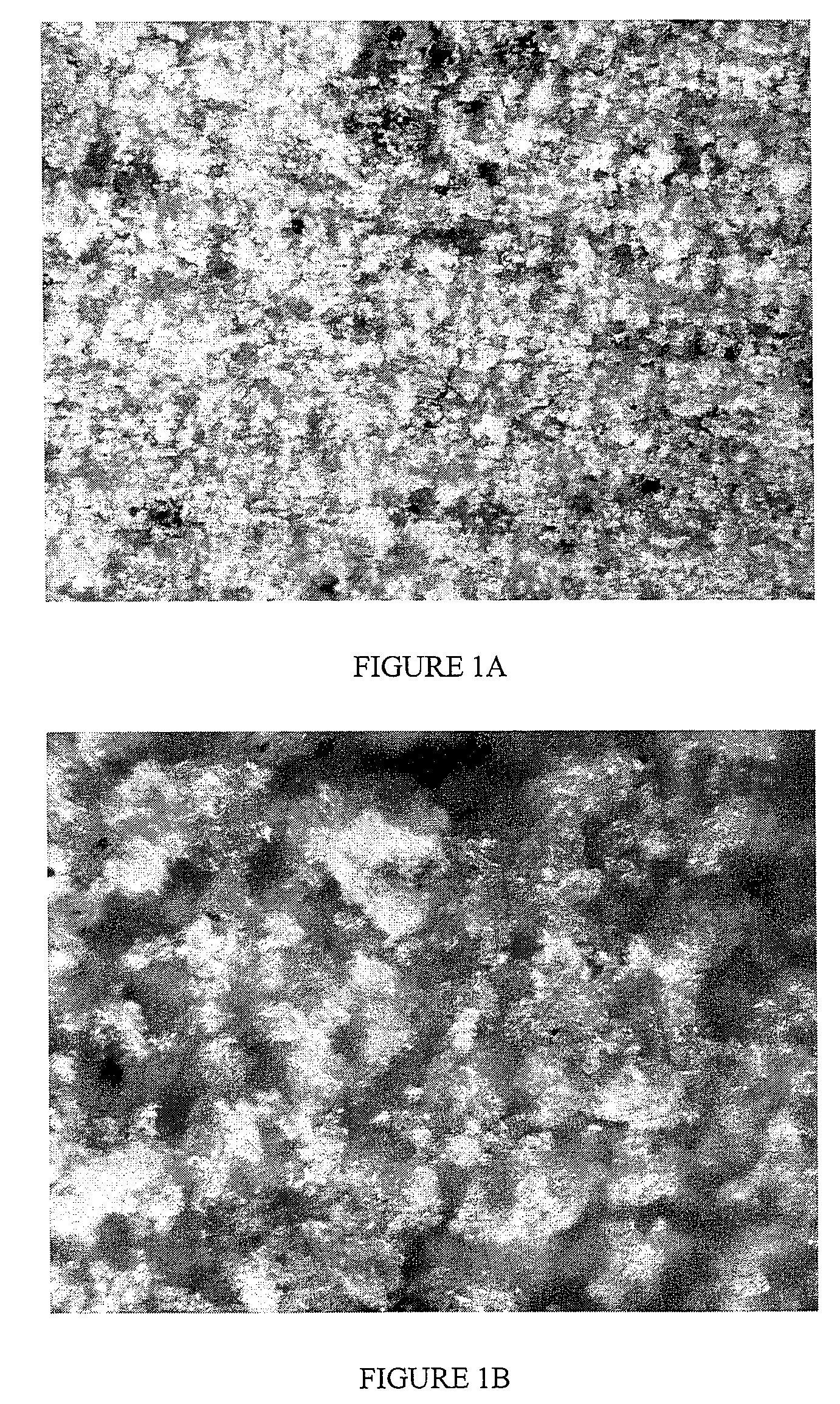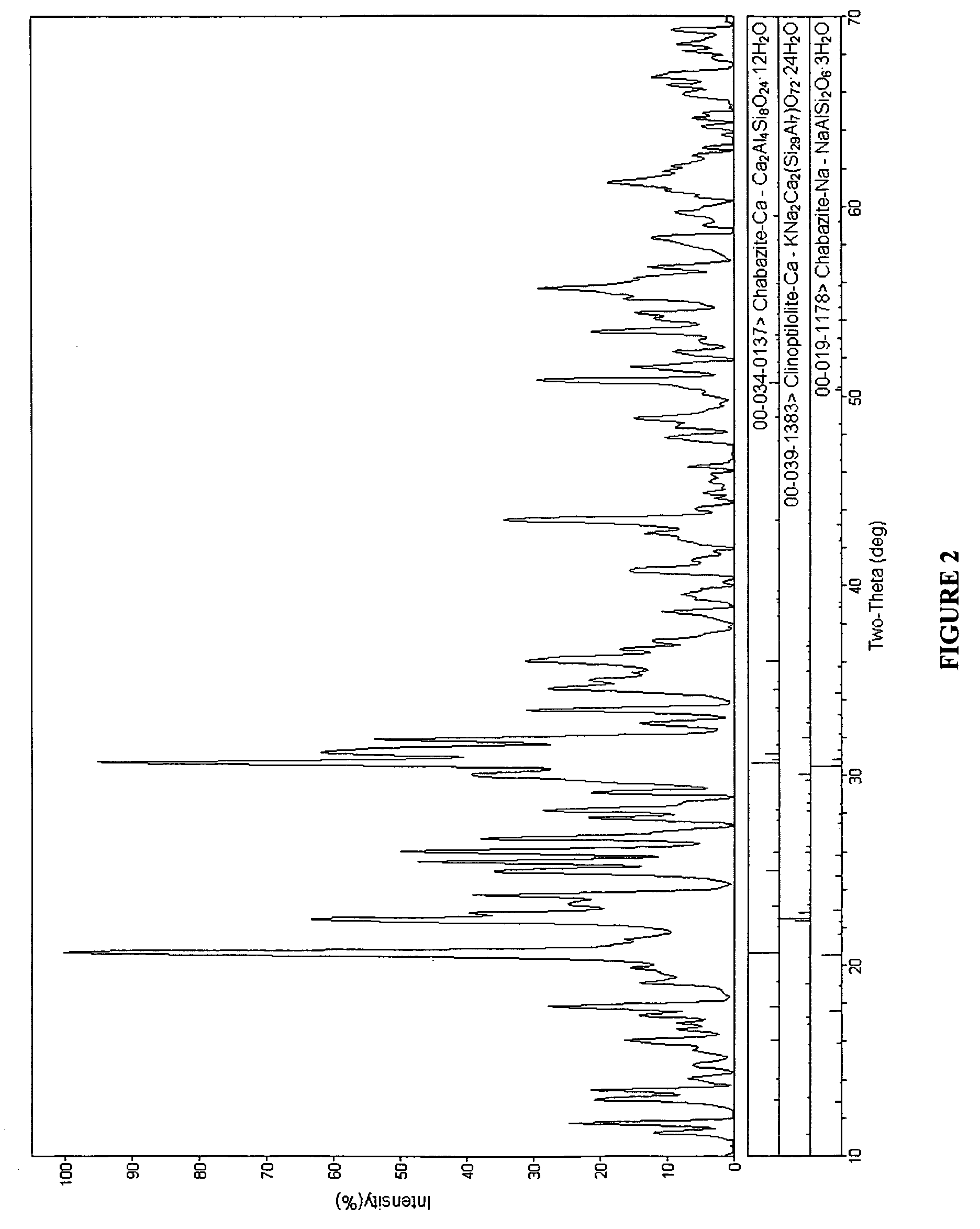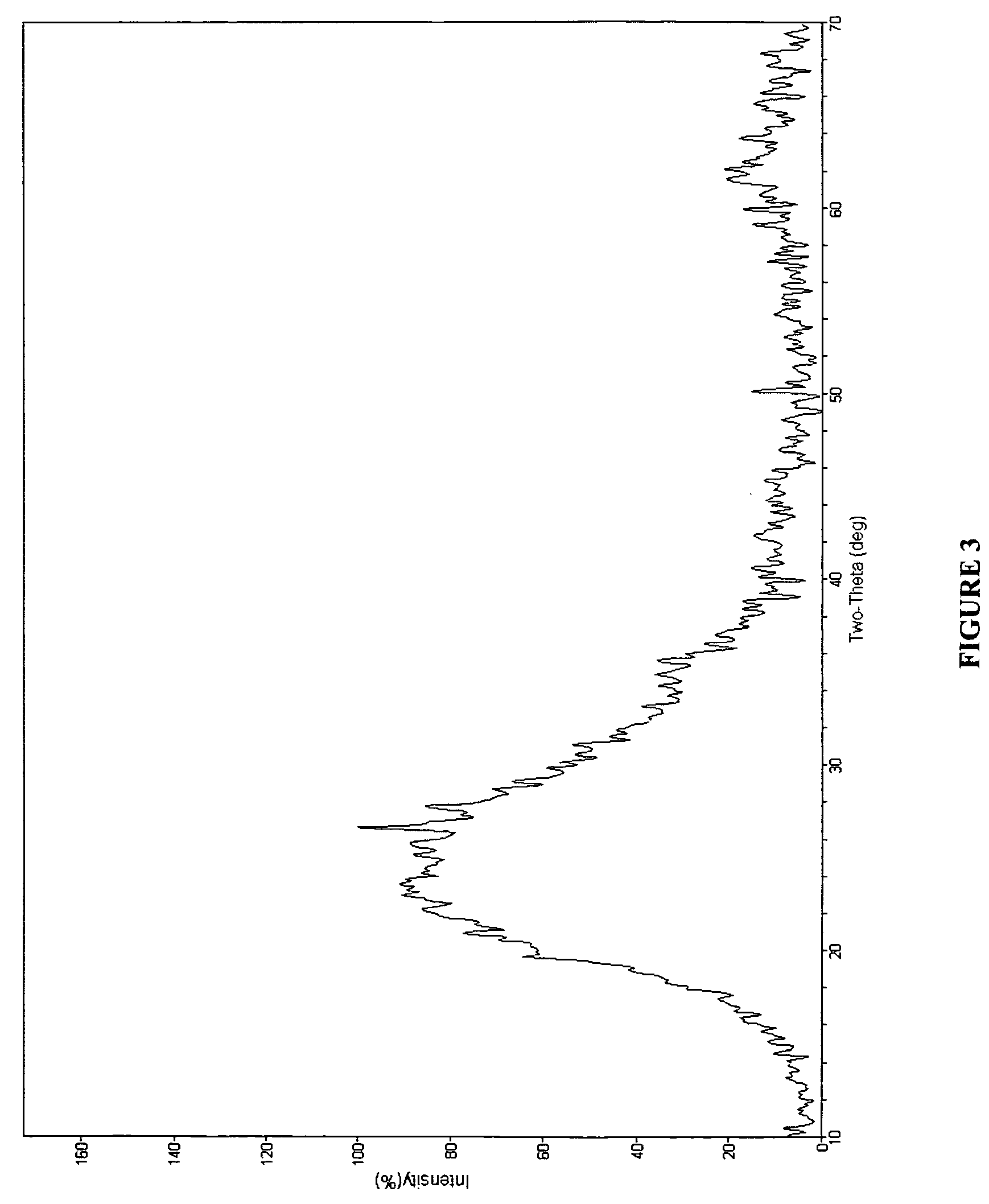Pumice containing compositions for cementing a well
a composition and well technology, applied in the field of cement compositions containing pumice, can solve the problems of no longer providing zonal isolation, high undesirable complication of zonal isolation, and failure of cement sheath, and achieve the effect of reducing co2 emission
- Summary
- Abstract
- Description
- Claims
- Application Information
AI Technical Summary
Benefits of technology
Problems solved by technology
Method used
Image
Examples
example 1
[0057]For binary cement systems using API Class A or G cement, pumice is present in percent by weight of blend (BWOB). For example, for a blend of cement G+10% pumice, 90 g of cement G was mixed with 10 g of pumice to give a 100 g blend. All additive concentrations are calculated BWOB. In ternary cement systems, where cement, pumice and fly ash are used, the fly ash and pumice contents are also expressed by weight of blend. For example, for a 100 g blend of cement G+23.1% fly ash+23.1% pumice: 53.8 g cement G is added to 23.1 g fly ash and 23.1 g pumice. All additives concentrations are then given in % BWOB of total weight of solids present (cement+fly ash+pumice). Water is then added to make the desired slurry density.
[0058]Compressive strength data from 8 to 48 hours for API Class A and G cement at densities of 1400, 1750 and 1900 kg / m3 are shown in Tables 3, 4 and 5 respectively. Graphical representations of the data are provided in FIGS. 4 and 5. Class A cement is generally used...
example 2
[0064]Compressive strength testing was carried out on API Class G (Table 6) and API Class A (Table 7) cement while varying the pumice content of the blend. The results show that pumice can be added to cement blends over a range of concentrations and still meet strength requirements. Graphical representations of the data are provided in FIGS. 6 and 7.
[0065]
TABLE 6Compressive strength data for API Class Gcement varying pumice contentPumiceCompressive Strength (MPa)DensityBHST%Accelerator1648kg / m3° C.BWOB% BWOB8 HrsHrs24 HrsHrs175025101.000.793.055.3110.39175025301.001.064.218.1814.58175025401.001.515.8711.0017.71175025501.001.676.4611.4017.16
[0066]
TABLE 7Compressive strength data for API Class Acement varying pumice contentCompressiveStrength (MPa)DensityBHSTPumiceAccelerator162448kg / m3° C.% BWOB% BWOB8 HrsHrsHrsHrs175025101.002.138.1812.5318.26175025301.002.869.4313.3618.56175025401.003.9512.0515.8421.93175025501.004.3812.8115.7622.15
example 3
[0067]Some compressive strength data are summarized in Table 8 where different accelerators were used in the cement blend.
[0068]
TABLE 8Compressive strength data for API Class A cement varying acceleratorBHSTAcceleratorCompressive Strength (MPa)° C.(1% BWOB)8 Hrs16 Hrs24 Hrs48 Hrs50None0.551.202.044.5750CaSO4 (anhydrous)0.981.192.585.1850Sodium Sulfate1.552.353.316.3450Calcium Hydroxide1.712.283.646.35Class A cement + 23.1% fly ash and 23.1% pumice was used in all blends
PUM
| Property | Measurement | Unit |
|---|---|---|
| particle sizes | aaaaa | aaaaa |
| density | aaaaa | aaaaa |
| density | aaaaa | aaaaa |
Abstract
Description
Claims
Application Information
 Login to View More
Login to View More - R&D
- Intellectual Property
- Life Sciences
- Materials
- Tech Scout
- Unparalleled Data Quality
- Higher Quality Content
- 60% Fewer Hallucinations
Browse by: Latest US Patents, China's latest patents, Technical Efficacy Thesaurus, Application Domain, Technology Topic, Popular Technical Reports.
© 2025 PatSnap. All rights reserved.Legal|Privacy policy|Modern Slavery Act Transparency Statement|Sitemap|About US| Contact US: help@patsnap.com



